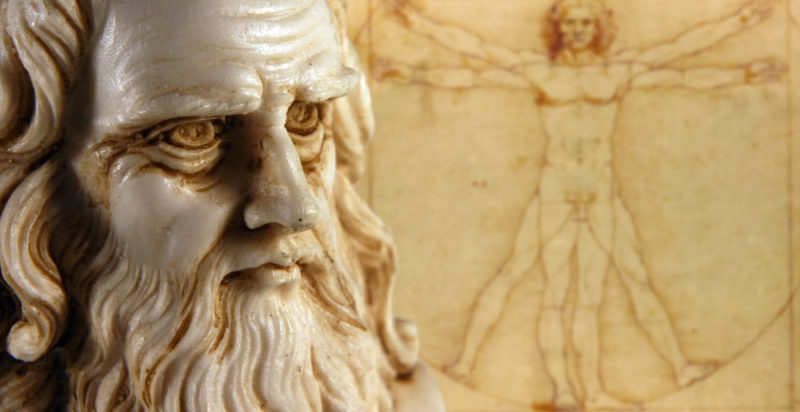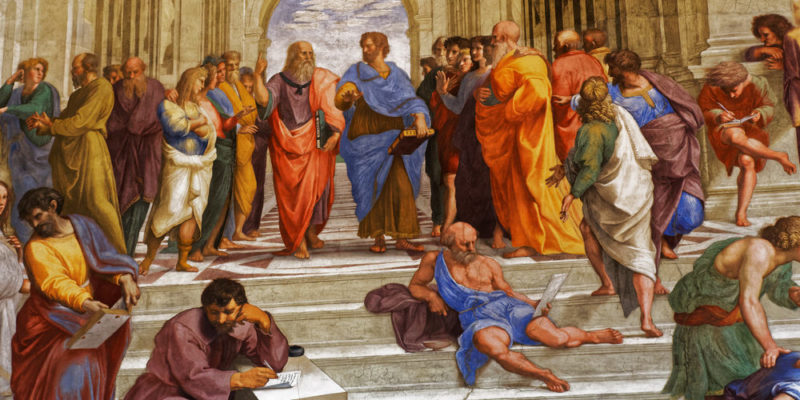We explain what the Renaissance is and what its main characteristics are. In addition, the artists who were part and the role of the Church.
What is the Renaissance?
 The Renaissance was an important artistic and philosophical movement that originated in Italy in the late 15th century . Its name alludes to the rediscovery of Greco-Roman culture and classical philosophy . In addition, it was inspired by humanism , a 14th-century movement that exalted human nature in opposition to the restrictions imposed by Orthodox religion.
The Renaissance was an important artistic and philosophical movement that originated in Italy in the late 15th century . Its name alludes to the rediscovery of Greco-Roman culture and classical philosophy . In addition, it was inspired by humanism , a 14th-century movement that exalted human nature in opposition to the restrictions imposed by Orthodox religion.The Renaissance movement was accompanied by important scientific advances and inventions of the time, such as the heliocentric theory of Nicolás Copernicus (in which the Sun was the center of the universe and the Earth revolved around it) and the invention of the printing press developed by Johannes Gutenberg in 1450.
Due to the ability to use reason, the image of man was venerated and an intellectual revolution was generated by being able to massively disseminate little-known texts that promoted the renewal of traditional Greco-Roman culture and values .
The Renaissance was a period of transition between the Middle Ages and the Modern era and it was a gradual change that impacted all areas of life . It signified the rebirth of learning and wisdom, after a long period of cultural decline and stagnation.
Renaissance Features
 Among the main characteristics of the Renaissance are:
Among the main characteristics of the Renaissance are:
- Discoveries: Great innovations such as the printing press, sea routes, the conquest of new continents , among others, which generated a predisposition at a massive level to learn and explore.
- Rationalism: Faith was questioned and interest grew in acquiring new knowledge based on reason, which could explain reality, leaving aside the dogmatism of the Middle Ages.
- Humanism: Man was considered the center of the universe and the ultimate goal of creation. He put aside theocentrism (in which god was the center of interest) although he continued to believe in deity as the creator of the universe.
- Nature: The artists showed a great interest in nature and in the perfection in the representation of the human body , which was a recurrent element used in painting and sculpture .
The art, as one of the human creations, was an activity valued and was the main discipline by which the Renaissance movement, which manifested itself was based on the observation of the world and its expression through reason and knowledge.
The great thinkers were key to the scientific and cultural revolution of the Renaissance, such as the astronomer Nicolás Copernicus and the physicist Galileo Galilei who challenged the ideas until then accepted and proposed the theory that the Sun was the center of the universe and the planet revolved around the luminous star.
That theory was forbidden by the Church for many years, although that did not prevent scientists from continuing to investigate on the basis of that theory. The Renaissance movement collaborated so that this new knowledge was made known more and more.
Renaissance artists

The peak period of the Renaissance was between 1490 and 1527, and the main representatives were:
- Leonardo da Vinci (Italian, 1452-1519): Considered the last man of the Renaissance and a lonely genius. Some of his works are: the Mona Lisa , The Virgin of the Rocks and The Last Supper .
- Miguel Ángel ( Spain , 1475-1564): Considered an artist with enormous creative potential. Although he excelled as a sculptor, one of his best known works is The Creation of Adam , a giant fresco on the ceiling of the Sistine Chapel in the Vatican.
- Rafael Sanzio (Italian, 1483-1520): Considered an artist who knew how to express the classical spirit, with harmony, beauty and perfectionism. He learned of the styles of da Vinci and Migues Ángel. One of his main works is The School of Athens , painted in the Vatican.
Art, architecture and science
Art, architecture and science merged seamlessly during the Renaissance. The artist Leonardo da Vinci contributed scientific principles on anatomy that allowed to recreate the human body with extraordinary precision, both in painting and sculpture.
The architect Filippo Brunelleschi analyzed from mathematics how to design huge and perfect buildings in terms of their architectural technique, with ornamental domes that maintained harmony without losing opulence.
Scientific discoveries had a great impact on thinkers such as Copernicus, Galileo and Descartes , who proposed a new vision of astrology and mathematics .
Religion during the Renaissance

The humanism of the 14th century encouraged Europeans to question the role of the Roman Catholic Church, and that unease was heightened during the Renaissance. As more people learned to read, write, and interpret the ideas, they began to examine and critique religion as they knew it.
The printing press allowed texts like the Bible to spread , so most people read it for the first time. In the 16th century, the German monk Martin Luther led the Protestant Reformation, a revolutionary movement that caused a division in the Catholic Church after questioning some practices and teachings of the Bible. Thus arose Protestantism.
She has pursued her studies in The United States, where she has graduated in Business and Economics and is currently finishing her Master studies in International Economics and Finance. Miss. Amputee is fluent in three languages: English, Spanish and Russian and has elementary knowledge of French and Italian. She love exploring how Collaborative Research Group can become the best tool to achieve the (necessary) educational change. .
Leave a reply
Your email address will not be published. Required fields are marked *Recent post

Sport: What Is It, Types, Risks, Features, Characteristics and Examples

Dogs: Emergence, Features, Characteristics, Feeding and Breeds

Story: Definition, Elements, Structure, Features and Characteristics

